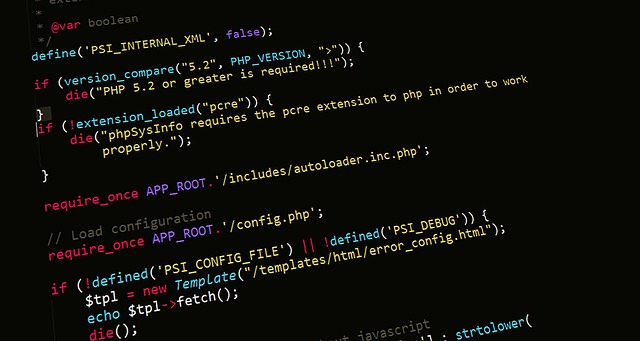In today’s web and mobile development, React JS stands out as one of the most popular JavaScript frameworks. But how should one use this powerful tool? What are the best practices for getting the most out of React? And more fundamentally, what makes it special? This article explores the answers to these questions and more, providing an introductory guide to the fundamentals of React JS.
With the rapid growth in internet and web technology, web developers are constantly looking for ways to work smarter and faster. React JS has emerged as a leading contender in the debate over which technology is best-suited for web development, combining the advantages of component-based architecture, virtual DOM rendering, and effective data management. React allows developers to build front-end applications with unprecedented speed and scalability.
Despite its advantages, React JS still requires careful consideration for proper use. In this article, you will learn the key principles for getting the most out of React. From leveraging component-based architecture and virtual DOM rendering to utilizing the state and props objects and developing efficient data sharing among components. Understanding and adhering to these best practices will ensure the success of React-based applications.
Finally, the article will discuss the various aspects of React’s architecture, comparing it to other technologies to reveal how React’s flexibility and simplicity make it stand out. All the aspects will be broken down into easy-to-understand components of the framework and how they interact. By the end, you will have a comprehensive understanding of React’s inner workings and be able to immediately begin implementing its benefits in your own applications.
Definitions of React JS
React JS is a JavaScript library developed by Facebook. It is used for building interfaces and user experiences that are easy to use and maintain. React allows developers to create components that can be used to create complex user interfaces. This makes it an ideal choice for developing single page applications and web applications. React component is an isolated piece of code that can be reused multiple times within the application.
The React components have their own state, which can be used to store data about the user and the application. This can help in fast loading of the page as the data is stored and rendered client-side. Components can also receive data from other parts of the application, allowing for dynamic and interactive user-interfaces. React also has a virtual DOM, which helps with optimization of the page.
React components use JSX, a JavaScript syntax extension, to define how components are rendered. JSX makes it easier to write code that is easy to read and understand. It also helps to create components that are highly reusable and efficient. Additionally, React components can also be used to create dynamic interactions with the user. This allows for interactive UI that can respond to the user’s input.
React is highly popular among developers due to its ease of use, scalability and reliable performance. It is also open source, making it available for many developers to make modifications and improvements. React provides a comprehensive suite of tools for building user interfaces and applications. It can be used with a wide variety of front-end languages and libraries.
Introduction to React JS
Introduction to React JS
React JS is an open-source JavaScript library which is used for building user interfaces, particularly for single-page applications. It was developed by the engineers at Facebook with a focus on creating a framework that was both fast and robust. React has become one of the most popular JavaScript libraries in the world, and has become a popular choice for creating single-page applications, user interfaces and interactive websites.
Advantages of Using React JS
React has a number of advantages that make it stand out from other frameworks and libraries. Firstly, its component-based structure allows for efficient rendering of user interfaces. This makes it fast and efficient, allowing developers to quickly build user interfaces that can be changed and adapted quickly. React also has a virtual Document Object Model (DOM), which constantly updates the user interface without re-rendering the entire document. This feature also makes React a very attractive option for developing complex user interfaces.
Using React in Projects
React is also a great choice for developers who want to quickly build out complex user experiences. The library allows developers to create dynamic and interactive components with a reduced amount of code, making it easier to experiment with different user interfaces and applications. React is easily integrated with other popular technologies like Node.js and Express.js, allowing developers to quickly build out user experiences without having to learn a new language.
React utilizes a powerful tool called the “React Developer Tools” to help developers debug and improve the code of their applications. This tool helps developers effortlessly scan their code and debug issues that may arise during development. Additionally, React also offers Hot Module Replacement (HMR) which allows developers to easily update running applications and see changes without needing to reload them.
Conclusion
React is a highly popular library that can be used to quickly develop user interfaces and applications. Its component-based structure and virtual DOM allow developers to quickly build rapid and dynamic user experiences. Additionally, its debugging tools and hot reloading support are particularly helpful for developers who are looking to further refine their code. All in all, React is an excellent choice of technology for building powerful and interactive user experiences.
Setting up React JS
React is a JavaScript library commonly used in building user interface (UI) components. It is among the most popular JavaScript libraries and is used by many web developers to create interactive web applications. React is also used in mobile app development, offering a novel way of creating native interfaces for iOS and Android.
What is React js?
React is an open-source library created by Facebook and used by developers for building user interfaces. The library is optimized for speed, ease of use, and massive scalability. The main objective of React is to provide developers with an efficient and flexible way to create interactive UIs. It enables developers to create reusable user interface components that can be shared between different projects.
What are the advantages of React JS?
React is highly modular and this is the key strength of the library. React components are small, reusable, and can be combined in a variety of ways to create complex UIs in a short amount of time. In addition, the library follows a one-way data flow, which means that the data flows in only one direction from a parent component to its children components. This makes React applications easier to debug and maintain. Furthermore, React also has support for multiple frameworks, such as React Native and Electron, allowing developers to create cross-platform applications with ease.
React also provides an excellent amount of flexibility when it comes to styling. The library’s modularity makes it easy for developers to design components using specific styling or a style guide. Additionally, React components are highly extensible, so developers can easily add more features to existing components or add new components to existing projects. Lastly, React is built with performance in mind, making it easy for developers to create applications that run quickly and efficiently.
In conclusion, React is a powerful library that enables developers to create efficient and robust UI components for web and mobile applications. It’s easy to use, highly modular, and follows a one-way data flow to ensure that there are no problems with debugging and maintenance. Additionally, React offers an excellent level of flexibility when it comes to styling and is built with performance in mind. All these features make React an attractive choice for building interactive UIs.
Developing with React JS
React JS is a powerful open source JavaScript library maintained by Facebook. It is used for creating amazing user interfaces for web applications. It is used to create complex and interactive UIs. It allows developers to create high performance applications with fast rendering, secure code and reusable UI components.
One of the benefits of React JS is that it can be used for creating SPAs (Single Page Applications). These are applications that run in a browser and require only one page to instantiate a user interface. This eliminates the need for developers to serve multiple physical pages during run time and instead work with a single page where they can create changes with the help of the library.
The library comes with an amazing feature named virtual DOM that makes it easy to create a fast and responsive user interface. By default, this feature enables automatic updates on the user interface every time a change is made to the data. This makes sure that the application is always in sync with the data and the user is presented with continuously updating information.
Developers can benefit from the feature it provides for component based development. This makes it possible to create and reuse components that can be used across the same or multiple projects. This makes user interfaces consistent across platforms and reduces the time and effort needed for development.
Another great feature of the library is that it is built on Javascript. This makes it easy for developers to use the same language for both server-side and client-side programming. This makes it useful for creating full-stack applications as the language can be used from the beginning to the end of the development cycle.
React JS makes development easier and faster. It is the perfect tool for creating user interfaces for modern web applications. It offers features like virtual DOM and component based development that makes application development much simpler. It is easy to use, secure and allows developers to create fast and responsive applications that can work across platforms.
Conclusion
Overall, React JS is an amazing tool with a lot of potential uses. It is becoming more and more popular, and it can bring immense value to developers. But, it also requires careful consideration when it comes to implementation. This article touched on some basic points, but there is so much more to React JS and exploring all it has to offer.
If you’re interested in staying up to date on React JS, be sure to keep an eye on our blog for new posts coming your way soon. React JS is an ever-evolving technology, so it’s important to stay on top of the news and see what is happening in the world of React JS.
FAQs
Q: What is React JS?
React JS is an open-source JavaScript library for creating interactive user interfaces. It is a library that uses Javascript code to create components that correspond to certain user interface elements. These components allow developers to create complex UIs more quickly and efficiently.
Q: What are some advantages of using React JS?
React JS offers several advantages over other frameworks. It is easier to create visually appealing user interfaces that are also functional. React JS makes development more efficient and cost effective, as it reduces the time to create a user interface. Additionally, it is also quite reliable and can provide a great user experience.
Q: How do you install React JS?
Installing React JS is not a difficult task, and requires minimal effort in most cases. Generally, all that is necessary is to install a framework such as Create React App or Gatsby, in order to get started. Once completed, you can start developing components and writing code.
Q: What kind of development techniques are supported by React JS?
React JS supports many different development techniques, so developers have considerable flexibility when creating user interfaces. It is possible to use traditional HTML, CSS, JavaScript, or even JSX syntax. Furthermore, React JS components can also be written in pure JavaScript.
Q: What are some of the challenges with React JS?
React JS can present some challenges, particularly when it comes to debugging and testing components. There are a plethora of tools available that can help with debugging and testing, but they may require additional setup in order to work properly. Additionally, keeping up with frequent updates can also be a challenge.




